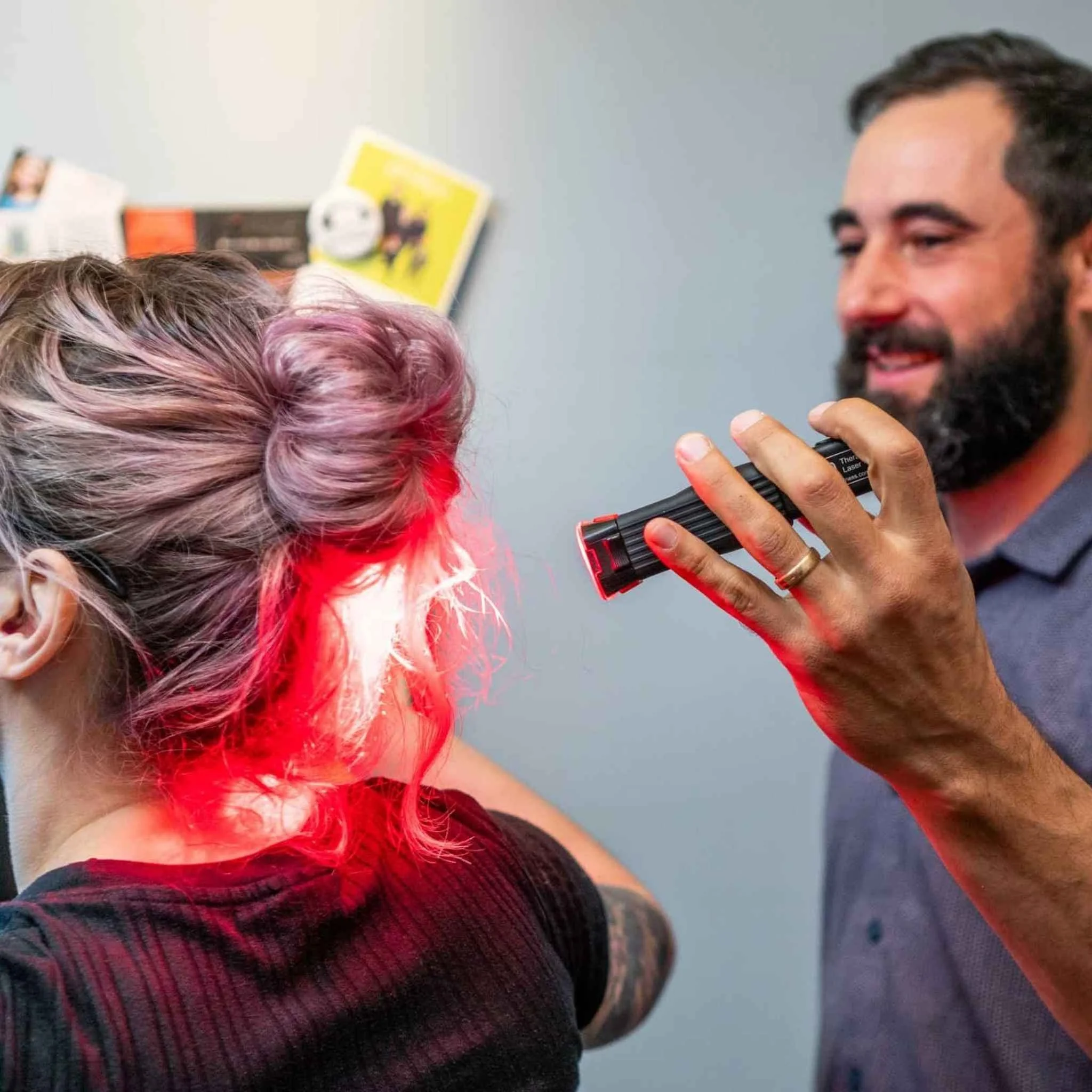Functional Neurology & the Principles of Neuroplasticity
A non-invasive technique to increase & enhance human function.
Functional Neurology uses non-invasive rehabilitation strategies to manipulate the cells and connectivity of specific areas of the nervous system.
Using the principles of Neuroplasticity Dr. Leopold is to be able to positively change both the brain’s function and structure to improve symptoms and functional limitations. Functional neurology utilizes a variety of evidence-based technologies and a deep understanding of neuro-anatomy to increase and enhance human function.
5.0 out of 5 based on 54 Help.me reviews
5.0 out of 5 based on 80+ Google reviews
“I have been struggling with dizziness, balance, and all other vertigo-like symptoms for over a year now and in just one session with Dr. Leopold, I noticed a significant difference. After going through multiple doctors, getting an MRI, I finally found relief with Dr. Leopold. He knows exactly where to work and how to correct it. Not only is his work and knowledge incredible, he makes you feel very comfortable. Working with a professional who actually wants to see you get better is so exciting. The last session I had with Peter, I drove home in tears because I had an overwhelming amount of gratitude for him and his work. I could actually turn my head and move my body in a way that didn't cause pain or make me feel like I was spinning. Being only 26 years old and not feeling well and having doctors tell you "you're fine" when you don't feel fine is scary. I feel so fortunate to have found Peter as it feels like I am gaining my life back!”
V.V. - Public Health Nurse
Meet Dr. Peter Leopold, DC, FIBFN (FN, CND)
Functional Neurologist. Integrative Healer. Lifelong Student of the Human Potential.
Dr. Peter Leopold brings a rare blend of scientific expertise, deep empathy, and mind-body wisdom to his chiropractic and functional medicine practice. A Summa Cum Laude graduate of UC Berkeley and Magna Cum Laude graduate of Life Chiropractic College West, Dr. Leopold is also pursuing a Master’s degree in Human Nutrition and Functional Medicine through the University of Western States.
His commitment to clinical excellence is reflected in his advanced certifications in Functional Neurology and Childhood Neurodevelopmental Disorders. As a Fellow of the International Association of Functional Neurology and Rehabilitation (IAFNR), Dr. Leopold remains at the forefront of brain-based healing and integrative care.
Services: Functional Neurology
Using the Principles of Neuroplasticity
Photobiomodulation
What it is: Also known as low level light therapy, or “cold laser”, a class 3 medical laser is used to increase the metabolic activity of certain cells.
What it does: Red and infrared light is absorbed by certain enzymes within the mitochondria and has been shown to
Increase ATP production
Stabalize cellular membrane
Stimulate vasodilation
Increase anti-inflammatory processes
Decrease free radical production
Enhance lymphocyte response
Induce axonal sprouting and synaptogenesis
Neuro Sensorimotor Integration Training
What it is: A 50 inch HD TV and interactive touch screen, the NSI-R is a multi-sensory system.
What it does: Helps improve eye-hand coordination with cognitive processing and balance tracking and also promotes mental acuity. The programmable instrument offers activities to address: Pursuits, Saccades, Eye-Hand Coordination, Visual Reaction Time, Speed and Span of Recognition, Visual Balance Integration, Ocularmotor Skills, Visual Motor Skills and Neuro-Cognitive Skills.
Balance Tracking Systems
What it is: BTrackS™ Assess Balance software used by healthcare professionals and researchers.
What it does: Objectively assesses and trains an individual’s balance over time. Includes
Fall Risk Assessment
Normative Balance Screening
Vestibular Disorder Evaluation
Biofeedback-based Balance Training
Neuro-Optometric Rehabilitation
Asymmetric Weight Distribution
Neuropathy Balance Disruption
Traumatic Brain Injury
Neuromuscular Re-education
Orthopedic Evaluation
Transcutaneous Vagal Nerve Stimulation
What it is:: Light electrical stimulation to the auricular branch of the vagus nerve.
What it does: Activates the parasympathetic nervous system which may impact various areas of health including:
•Immunity
•Digestion
•Stress levels
•Hormones
•Respiration
•Heart rate
•Decrease inflammatory markers in the blood
•Decreases intestinal permeability
Vestibular Rehabilitation
What it is: Specific rehab exercises involving eye, head and neck movement
What it does: Isolates and strengthens weak neural networks which are components of the vestibular system. Dysfunction here can even contribute to neurobehavioral disorders, anxiety, depression and other mental health disorders.
Balance, posture and spatial orientation are all component of the vestibular system, the “gyroscope” of the inner ear which senses gravity as well as angular and linear acceleration of the head. Dizziness, vertigo, BPPV, neuronitis and vestibular migraine are symptoms of dysfunction and lack of integration of this system.
Pulsed Radio Frequency Neuromodulation
What it is: The Stimpod NMS460 uses a patented Pulsed Radio Frequency waveform.
What it does: Treats peripheral neuropathy and chronic intractable pain. Case studies include the successful treatment of:
Diabetic neuropathy
Rheumatoid arthritis
Bell’s palsy
Migraines
Sciatica
Meralgia parasthetica








